Ethnobotany Test One • Name:
I. Matching: Write letters under correct image below.
Place the letter for the correct name of the plant under the picture of the plant. Write the name in your first language (L1), if any. Your language might no longer have a name for the plant. If so, then leave the item blank. Write down a use for the plant in Micronesia. The use can be from any culture.
A. Asplenium nidus E. Phymatosorus scolopendria
B. Cyanobacteria F. Moss
C. Huperzia phlegmaria G. Thelypteris maemonensis
D. Lycopodium cernuum H. Vittaria spp.
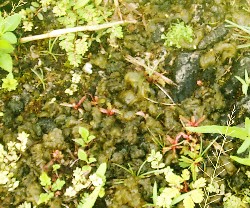
Balls of green jelly found on rocky ground in the sun.
1. Letter: ____ L1 name:
Local use:
|
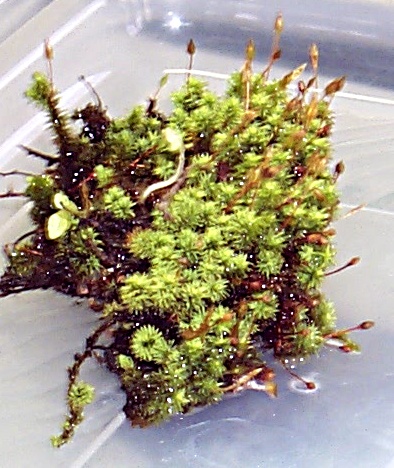
Found on rocks near rivers, on tree trunks, and in the shade.
2. ____ L1 name:
Local use:
|
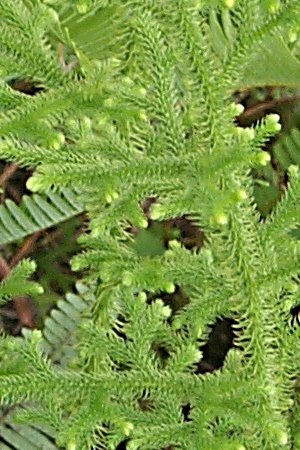
Fuzzy almost furry plant found on sunny hilltops beyond the gym.
3. ____ L1 name:
Local use:
|
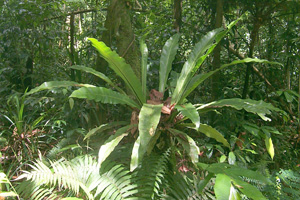
Usually found growing on trees.
4. ____ L1 name:
Local use:
|
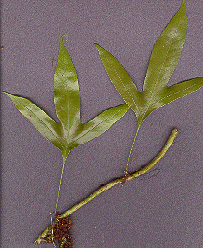
Found growing on trees, including coconut palms. Also grows on the ground.
5. ____ L1 name:
Local use:
|

Found growing only on old trees, always hangs down.
6. ___ L1 name:
Local use:
|

Found growing on the shady forest floor.
7. ____ L1 name:
Local use:
|
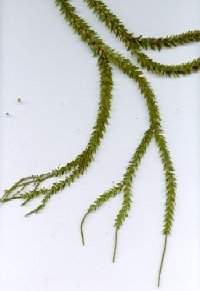
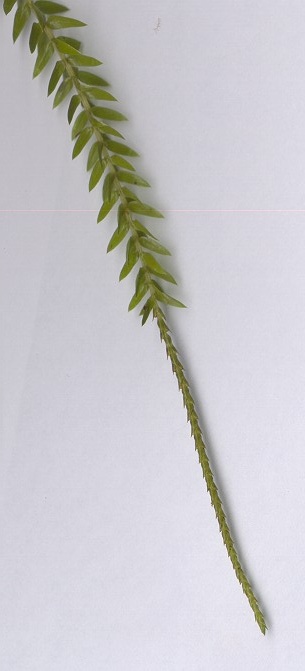
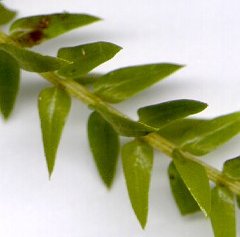
Found hanging from trees in the forest.
8. ____ L1 name:
Local use:
|
Linguistic matching
| 9. _____ amäära | A. Chuukese |
| 10. _____ chichi | B. Kosraen |
| 11. _____ gob u láey | C. Latin |
| 12. _____ kamkam | D. Mortlockese |
| 13. _____ kidou | E. Mwoakillese |
| 14. _____ Phymatosorus scolopendria | F. Pingalapese |
| 15. _____ pweh | G. Pohnpeian |
| 16. _____ sra kwemkwem | H. Yapese |
II. Short Answer
- What organism is able to convert nitrogen (N2 gas) in the air into nitrogenous compounds usable by plants and animals?
- What is the function of the vegetative cell in the balls of green jelly found on rocky ground in the sun?
- Can we tell by looking the difference between male and female moss plants?
- Put the following into order from the botanically most "primitive" to most "evolved": cyanobacteria, ferns, lycopodium, mosses.
- Name a plant from our hike that had strobili.
- What are strobili?
 In the image of the moss to the right, what is the function of the long stalks that come up from the moss and end in a capsule? We viewed these in the laboratory on Tuesday. On living moss the stalks and capsule are usually brown.
In the image of the moss to the right, what is the function of the long stalks that come up from the moss and end in a capsule? We viewed these in the laboratory on Tuesday. On living moss the stalks and capsule are usually brown.- Mosses are unusual among plants in that the green part we see is haploid. All other plants we encounter in this course are diploid. What do the terms haploid and diploid mean?
- As a human being, are you a haploid or diploid?
- Where can I find Nostoc?
- To the best of your ability, label the parts G and C of the fern shown using botanically correct terms.
 G: ______________
G: ______________
C: ______________
- What is the meaning of a cultural disease, also known as a culture bound syndrome?
- Why do ethnobotanists study indigenous peoples?
- Cross-cultural toughies: What is the name, if any, of the following plants in your own language:
gob u láey: ____________________________
muhlihklihk: ____________________________
pwisehn ketipen: ____________________________
unen katu: ____________________________
- Toughie: What type of cell most likely made up the majority of the cells which you were seeing?
- akinetes that ensure survival
- heterocysts to break the nitrogen bond
- vegetative cells that engage in photosynthesis
- Make a sketch, to the extent of your ability to do so, of what the Nostoc (cyanobacteria) looked like under the microscope.
III. Short essay answer
The mosses and lycopodium we have been studying are united by some common reproductive features. What are those common features?










 G: ______________
G: ______________